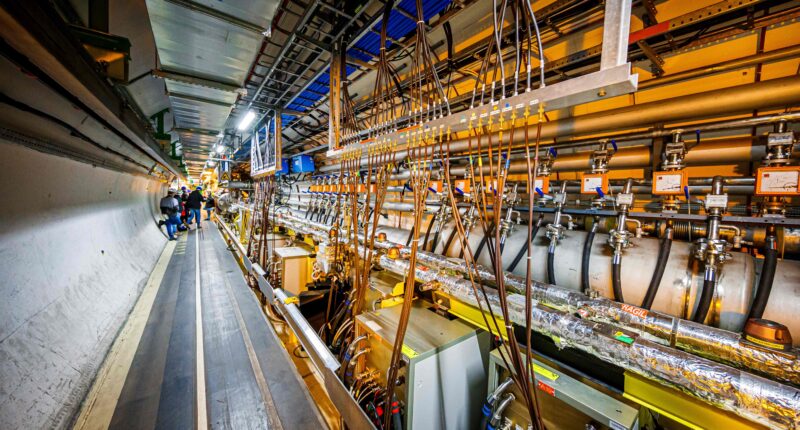A MASSIVE science lab in Geneva will be live-streamed in just a matter of hours for the re-launch of the world’s biggest atom-smasher, but that’s not CERN’s only claim to fame.
The European Council for Nuclear Research, CERN for short, has remarkable links to the invention of the internet as well.

The CERN headquarters in Geneva have made some ground-breaking scientific discoveries over the years[/caption]
Did CERN create the Internet?
The Internet was indeed created by a British scientist at CERN in 1989.
But the organisation is not just limited to the mega-lab where the Large Hadron Collider lies underground in Geneva, on the Franco-Swiss border, ready for switch-on.
CERN exists as a vast network of over 10,000 scientists in more than 100 countries across the world.
So Tim Berners-Lee came up with the idea for the internet to help these scientists at universities and institutes across the world share their information, discoveries and research with each other.
Read more Science
He wanted to combine the technologies of personal computers, networks and hypertext into a global information system – and the rest is history.
What was ENQUIRE?
Berners-Lee wrote his first proposal for the internet at CERN in 1989, but refined it with Belgian systems engineer Robert Cailliau the year after.
Yet, the scientist had previously made an early predecessor of the world wide web in 1980 under the name ENQUIRE.
The software project was a simple hypertext program which Berners-Lee named after an old how-to book, Enquire Within Upon Everything.
Most read in The Sun
However, ENQUIRE wasn’t up to scratch for what the internet-inventor had envisioned and he came back to CERN in 1984 to work on the system.
He realised that he wanted the world wide web to be similar to this prototype “but accessible to everybody”.
Who are Tim Berners-Lee and Robert Cailliau?
Tim Berners-Lee was the mastermind behind the internet at CERN and is well-known as the inventor of the world wide web.
Now, he is a professor at the Massachusetts Institute of Technology (MIT) and a Professorial Fellow of Computer Science at the University of Oxford.
Over the years he’s been crowned with numerous awards and recognitions, including a knighthood from the Queen in 2004 and a Turing Award in 2016.
In 1999, he was named in Time magazine’s list of the 100 Most Important People of the 20th century.
Robert Cailliau collaborated with Berners-Lee on the world wide web and created its iconic WWW logo.
The Belgian proposed the first hypertext system for CERN in 1987 which would go on to develop the internet as we know it.
He likewise organised the first Internation World Wide Web Conference at CERN in 1994.
The event was oversubscribed with 380 web pioneers and marked a real turning point in the development of the internet.
Read More On The Sun
As well as being such an esteemed computer scientist, Cailliau also authored the book How the Web Was Born in 2000.
He went on early retirement in 2007 after dedicating his time to public communication.
Most read in News












